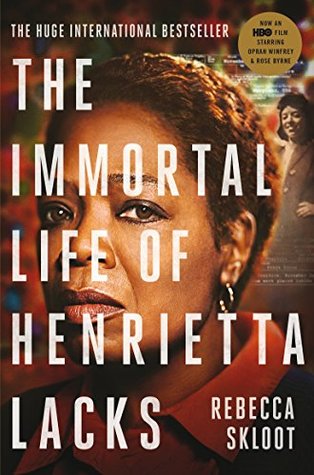More on this book
Community
Kindle Notes & Highlights
The cytoplasm buzzes like a New York City street. It’s crammed full of molecules and vessels endlessly shuttling enzymes and sugars from one part of the cell to another,
Henrietta died in 1951 from a vicious case of cervical cancer, he told us. But before she died, a surgeon took samples of her tumor and put them in a petri dish. Scientists had been trying to keep human cells alive in culture for decades, but they all eventually died. Henrietta’s were different: they reproduced an entire generation every twenty-four hours, and they never stopped. They became the first immortal human cells ever grown in a laboratory.
they helped develop drugs for treating herpes, leukemia, influenza, hemophilia, and Parkinson’s disease; and they’ve been used to study lactose digestion, sexually transmitted diseases, appendicitis, human longevity, mosquito mating, and the negative cellular effects of working in sewers.
Most cervical cancers are carcinomas, which grow from the epithelial cells that cover the cervix and protect its surface.
Cervical carcinomas are divided into two types: invasive carcinomas, which have penetrated the surface of the cervix, and noninvasive carcinomas, which haven’t. The noninvasive type is sometimes called “sugar-icing carcinoma,” because it grows in a smooth layered sheet across the surface of the cervix, but its official name is carcinoma in situ, which derives from the Latin for “cancer in its original place.”
Many scientists believed that since patients were treated for free in the public wards, it was fair to use them as research subjects as a form of payment.
January 17, 1912, when Alexis Carrel, a French surgeon at the Rockefeller Institute, grew his “immortal chicken heart.”
She told him she was glad her pain would come to some good for someone.”
She didn’t want to think she was gonna die.”
Henrietta died at 12:15 a.m. on October 4, 1951.
Black scientists and technicians, many of them women, used cells from a black woman to help save the lives of millions of Americans, most of them white.
Viruses reproduce by injecting bits of their genetic material into a living cell, essentially reprogramming the cell so it reproduces the virus instead of itself.
a discovery isn’t considered valid if others can’t repeat the work and get the same result.
Harry Eagle at the National Institutes of Health (NIH) used HeLa to develop the first standardized culture medium
But before the cloning of whole animals, there was the cloning of individual cells – Henrietta’s cells.
geneticist in Texas accidentally mixed the wrong liquid with HeLa and a few other cells,
how nuclear bombs destroyed cells and find ways to reverse that damage.
They used HeLa to test the effects of steroids, chemotherapy drugs, hormones, vitamins, and environmental stress; they infected them with tuberculosis, salmonella, and the bacterium that causes vaginitis.
They said the Nuremberg Code didn’t seem to apply in the United States, and that there were no laws protecting research subjects.
“Every human being has an inalienable right to determine what shall be done with his own body. These patients then had a right to know . . . the contents of the syringe: and if this knowledge was to cause fear and anxiety or make them frightened, they had a right to be fearful and frightened and thus say NO to the experiment.”
Cell sex solved that problem, because it meant researchers could combine cells with any traits they wanted and study how those traits were passed along.
To discourage slaves from meeting or escaping, slave owners told tales of gruesome research done on black bodies, then covered themselves in white sheets and crept around at night, posing as spirits coming to infect black people with disease or steal them for research. Those sheets eventually gave rise to the white hooded cloaks of the Ku Klux Klan.
INSANEEE!! I had no clue and I’m glad is book as taught me so many things like a new fact ever chapter. I can fell my frontal lobe developing😛
Ella liked this
They learned that HPV inserts its DNA into the DNA of the host cell, where it produces proteins that lead to cancer. They also found that when they blocked the HPV DNA, cervical cancer cells stopped being cancerous. These discoveries would help lead to an HPV vaccine, and eventually earn zur Hausen a Nobel Prize.
What scientists still haven’t figured out is why this produced such monstrously virulent cells both in and out of Henrietta’s body,
They also knew that there was a string of DNA at the end of each chromosome called a telomere, which shortened a tiny bit each time a cell divided, like time ticking off a clock. As normal cells go through life, their telomeres shorten with each division until they’re almost gone. Then they stop dividing and begin to die. This process correlates with the age of a person: the older we are, the shorter our telomeres, and the fewer times our cells have left to divide before they die.
human cancer cells contain an enzyme called telomerase that rebuilds their telomeres. The presence of telomerase meant cells could keep regenerating their telomeres indefinitely.
when you have an appendectomy, tonsillectomy, or any other kind of ectomy, the stuff you leave behind doesn’t always get thrown out. Doctors, hospitals, and laboratories keep it.
Myriad Genetics, which holds the patents on the BRCA1 and BRCA2 genes responsible for most cases of hereditary breast and ovarian cancer, charges $3,000 to test for the genes. Myriad has been accused of creating a monopoly,


